Higher classification Salmoniformes | Scientific name Salmonidae | |
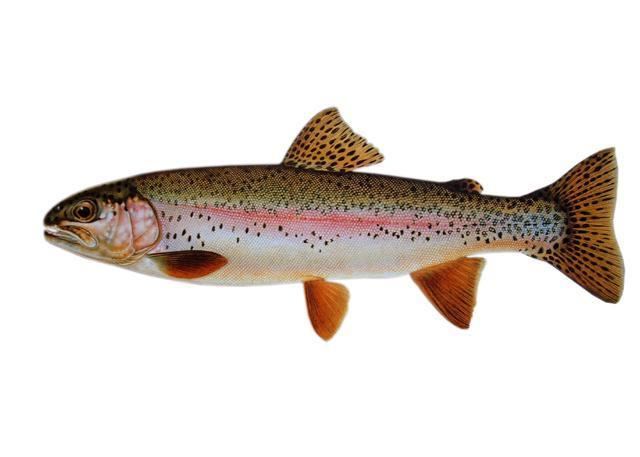 | ||
Order SalmoniformesBleeker, 1859 Mass Atlantic salmon: 26 kg, rainbow trout: 12 kg, Chum salmon: 8.7 kg, Sockeye salmon: 4.2 kg, Pink salmon: 3.7 kg Lower classifications Atlantic salmon, Rainbow trout, Brown trout, Oncorhynchus, Chum salmon | ||
Salmonidae is a family of ray-finned fish, the only living family currently placed in the order Salmoniformes. It includes salmon, trout, chars, freshwater whitefishes, and graylings, which collectively are known as the salmonids. The Atlantic salmon and trout of the genus Salmo give the family and order their names.
Contents
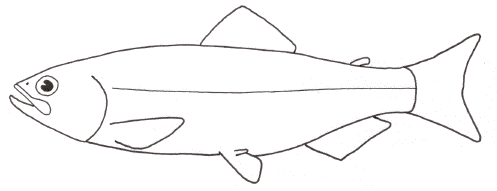
Salmonids have a relatively primitive appearance among the teleost fish, with the pelvic fins being placed far back, and an adipose fin towards the rear of the back. They are slender fish, with rounded scales and forked tails. Their mouths contain a single row of sharp teeth. Although the smallest species is just 13 cm (5.1 in) long as an adult, most are much larger, with the largest reaching 2 m (6.6 ft).
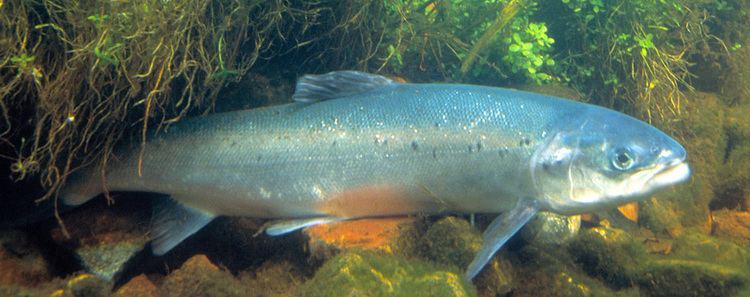
All salmonids spawn in fresh water, but in many cases, the fish spend most of their lives at sea, returning to the rivers only to reproduce. This lifecycle is described as anadromous. They are predators, feeding on small crustaceans, aquatic insects, and smaller fish.

Evolution
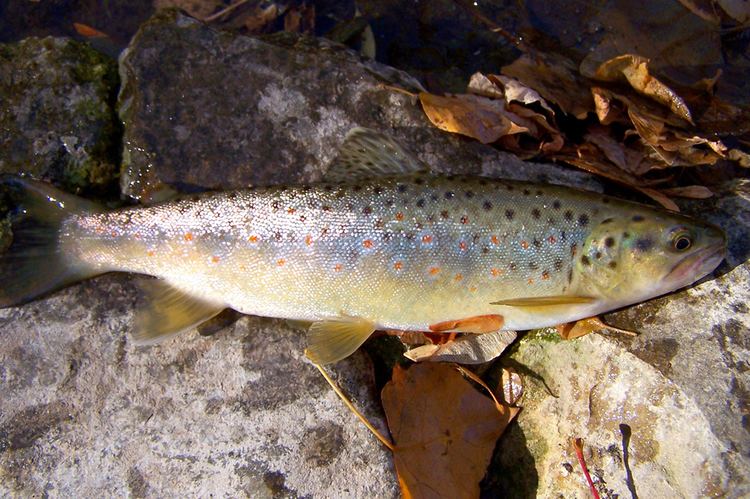
Current salmonids comprise three lineages, taxonomically treated as subfamilies: whitefish (Coregoninae), graylings (Thymallinae), and the char, trout, and salmons (Salmoninae). Generally, all three lineages are accepted to allocate a suite of derived traits indicating a monophyletic group.
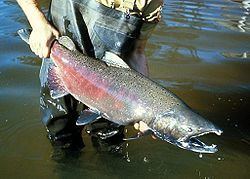
The Salmonidae first appear in the fossil record in the middle Eocene with the fossil Eosalmo driftwoodensis, which was first described from fossils found at Driftwood Creek, central British Columbia. This genus shares traits found in the Salmoninae, whitefish, and grayling lineages. Hence, E. driftwoodensis is an archaic salmonid, representing an important stage in salmonid evolution.

A gap appears in the salmonine fossil record after E. driftwoodensis until about seven million years ago (mya), in the late Miocene, when trout-like fossils appear in Idaho, in the Clarkia Lake beds. Several of these species appear to be Oncorhynchus—the current genus for Pacific salmon and some trout. The presence of these species so far inland established that Oncorhynchus was not only present in the Pacific drainages before the beginning of the Pliocene (~5–6 mya), but also that rainbow and cutthroat trout, and Pacific salmon lineages had diverged before the beginning of the Pliocene. Consequently, the split between Oncorhynchus and Salmo (Atlantic salmon) must have occurred well before the Pliocene. Suggestions have gone back as far as the early Miocene (about 20 mya).
Classification
Together with the closely related Esociformes (the pikes and related fishes), Osmeriformes (e.g. smelts), and Argentiniformes, the Salmoniformes comprise the superorder Protacanthopterygii.
The Salmonidae are divided into three subfamilies and around 10 genera. The concepts of the number of species recognised vary among researchres and authorities; the numbers presented below represent the higher estimates of diversity:
Order Salmoniformes
Hybrid crossbreeding
The following table shows results of hybrid crossbreeding combination in Salmonidae.
note :- : The identical kind, O : (survivability) , X : (Fatality)
